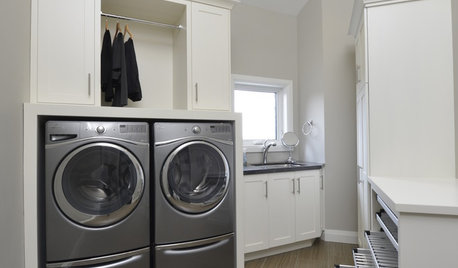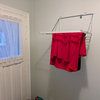Septic Protector
pamelah
13 years ago
Related Stories

MOST POPULAR10 Smart Ideas for Your Laundry Room Remodel
Make washing and drying easier and more comfortable by considering ergonomics, storage and special features
Full StoryHave any of you installed the Septic Protector filter on your washing machines? Our new home will have a septic tank. I am skittish about a septic system because I have not lived in a septic tank serviced home in 50 years!
The science behind the device leads me to believe that we should install this device, but the seller's website photos do not show the installation into a typical standpipe. If you have intalled it this way, please let me know if you have experienced any issues from diverting the washer discharge up to the Septic Protector unit.
This is the link to the info about the unit:
http://www.laundry-alternative.com/products/Septic_Protector.html






lazy_gardens
pamelahOriginal Author
Related Professionals
Arlington Kitchen & Bathroom Designers · Cherry Hill Kitchen & Bathroom Designers · Jacksonville Kitchen & Bathroom Remodelers · Overland Park Kitchen & Bathroom Remodelers · Richland Kitchen & Bathroom Remodelers · Saint Helens Kitchen & Bathroom Remodelers · Highland Village Cabinets & Cabinetry · Potomac Cabinets & Cabinetry · Liberty Township Cabinets & Cabinetry · Springfield Custom Closet Designers · Ramona Custom Closet Designers · Cranston Flooring Contractors · Framingham Flooring Contractors · Redmond Flooring Contractors · Scotts Valley Flooring Contractorsbigdogmom48
sandy808
calliope
suburbanmd
calliope
suburbanmd
calliope
llogbeck
suburbanmd
llogbeck
sandy808
claregirl
kiagarden
rococogurl